Magnesium sulfate, or Epsom salt, has become very popular among gardeners due to its multiple uses and potential advantages for various plants. This guide will go deep into the significance of Epsom salt on plant health, emphasizing particular plant species that exhibit major positive reactions upon application. The paper will look at how Epsom salt works, describe the best methods for using it, and give some of its merits to a gardener—knowing which plants need what amount of Epsom salts enables readers to make informed choices when caring for their gardens.
Why Use Epsom Salt in the Garden?
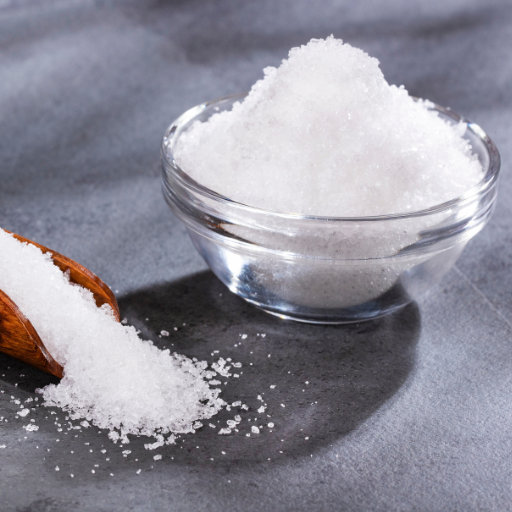
High levels of magnesium and sulfur in Epsom salt make it useful for gardening. The major reason why this is so is because the two nutrients are essential for the growth of plants. So, what role does magnesium play in photosynthesis? Well, it helps to form chlorophyll; a plant pigment that uses sunlight for energy production. Generally, Sulphur is necessary for producing amino acids, vitamins as well as enzymes plus assisting in plant metabolism at large. Therefore, through rectifying magnesium deficiencies, enhancing nutrient uptake, and improving soil quality, the application of Epsom salt can be done since these applications will result in vigorous growth, leading to increased yield and overall plant health improvement.
Epsom Salt: What Is It?
Epsom salt is an inorganic compound containing magnesium sulfate with a formula MgSO₄·7H₂O. This compound forms colorless crystals which are highly soluble in water with chemical composition consisting of Magnesium (Mg), Sulfur (S) and Oxygen (O). Its’ 9.8 % by weight comprises magnesium while 12.9% by weight consists of sulfur; providing essential soil nutrients. For instance, Magnesium ions (Mg²⁺) are indispensable in the production of chlorophyll, while sulfate ions (SO₄²⁻) aid in protein synthesis and enzyme formation. However, rates of Epsom salt application may change depending on the type of plant species as well as soil conditions but they usually vary from one tablespoon per gallon when spraying leaves to one cup per 100 square feet when amending soils Some people have used too much Epsom salt thus killing their plants instead always apply accurate amount to ensure optimum nutrient absorption without causing imbalances within your garden soil.
How Does Epsom Salt Help Plants?
- Magnesium Supplementation:
- Duty: Essential for chlorophyll production thus allowing photosynthesis.
- Effect: More energy in plants which means they tend to grow better and have more green foliage.
- Improvement of Nutrient Uptake:
- Mechanism: Enhancing magnesium uptake from the soil which aids other essential elements like nitrogen and phosphorus.
- Result: This leads to healthier and more vigorous plants as compared to those that are unable to retain nutrients.
- Sulfur Contribution:
- Function: Sulfur plays a key role in amino acid, Vitamin and enzyme synthesis.
- Effect: It supports overall growth and metabolism in plants.
- Soil Quality Enhancement:
- Modification: Improving the soil by making minerals soluble for plant acquisition during growth.
- Benefit: Optimal soil conditions support superior root development, healthy plants
- Alleviation of Magnesium Deficiencies:
- Symptoms: Yellowing between leaf veins (interveinal chlorosis) with dwarfed leaves.
- Solution: Regular application (1 tablespoon per gallon of water for foliar spray or 1 cup per 100 square feet for soil amendment) addresses deficiencies and promotes sustained plant health.
Common Uses of Epsom Salt for Plants
- Foliar Spray:
- Application rate: 1 tablespoon/gallon of water.
- Purpose: It quickly supplements nutrients by providing magnesium and sulfur directly to the leaves.
- Justification: Nutrient deficiencies in the plant can be corrected very fast because these elements are absorbed immediately through leaf tissues.
- Soil Amendment:
- Application rate: 1 cup/100 square feet.
- Purpose: This adds vital nutrients to enhance plant root development and overall healthiness of plants.
- Justification: Mineral solubility in soil is improved, leading to better nutrient availability for plant growth.
- Seed Soaking:
- Application Rate: Dissolve 1 teaspoon/gallon of water
- Purpose This boosts seed germination and early growth by supplying soluble magnesium and sulfur
- Justification Magnesium helps in chlorophyll synthesis as well as ATP formation crucial for the initial stages of inflorescence buds’ development while sulfur aids in the production of amino acids.
- Houseplants Care:
- Application Rate 2 tablespoons per gallon monthly
- Purpose To keep indoor plants from growing lush leaves only that are healthy
- Justification Steady magnesia supply prevents common houseplant problems such as yellowing leaves and stunting.”
- Tomato and Pepper Plants:
- Application Rate 1 tablespoon/gallon as a foliar spray every two weeks
- Purpose To prevent blossom end rot and encourage flower formation
- Justification For tomatoes and peppers which have high magnesium requirements, constant foliar sprays ensure that adequate amounts are available for fruit set and quality.
- Roses:
- Application Rate ½ cup per plant mixed into base soil
- Purpose Give rise to strong stems with colorful flowers emerging from them.
- Justification Additional magnesium supplies benefit roses by improving chlorophyll synthesis, vitality, energy balance, general appearance, etc.
How to Apply Epsom Salt to Plants?
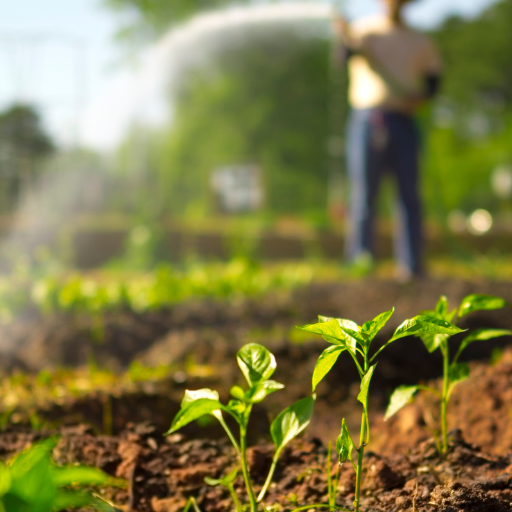
- Dissolving Method:
- The application of Epsom salt in water can be done after it has been dissolved.
- Mostly, the mixture is made by dissolving one or two tablespoons of Epsom salts into a gallon of water.
- It can be applied to the soil at the plant base or as a foliar spray depending on the requirements of different plants.
- Direct Soil Application:
- You can also pour Epsom salt directly over your plants’ roots.
- When using small plants, use about 1 tablespoon and up to 1/2 cup for larger shrubs and trees.
- This salt should be worked into the soil to enhance absorption gently.
- Frequency:
- Though not always, Epsom salts are usually applied every 2-4 weeks during the growing period as a general practice guideline.
- Plant response and specific needs will dictate adjustments in frequency.
How much Epsom salt per gallon of water?
While determining the right amount of Epsom salt for a gallon of water, it is important to consider the type of plant being treated and its specific nutrient requirements. In most cases, a standard concentration of 1-2 tablespoons per gallon of water is sufficient for many plants.
- 1 tablespoon per gallon: Recommended for delicate or plants with lower magnesium needs; this reduces risk for over-fertilization and possible soil salinization.
- 2 tablespoons per gallon: Suitable for plants such as tomatoes, peppers, and roses that require more magnesium. By doing so, there will be enough magnesium available for chlorophyll production and enzyme action among other crucial physiological processes.
The rate should be based on the observed plant reaction, the level of soil magnesium, and the overall health of the plants. This will help achieve the best results from Epsom salt use.
Best ways to apply Epsom Salt on Houseplants
Epsom salt can be used in houseplants through three ways – soil drenching, foliar spray or directly applied to the soil. For preparing a soil drench solution dissolve 1-2 tablespoons of Epsom salts in each gallon of water and apply at the base of the plant. This ensures that plant roots quickly take up magnesium. A foliar spray involves dissolving 1 tablespoonful of Epsom salts in every gallon of water, stirring well before spraying onto leaves. Foliar application is particularly beneficial because nutrients are absorbed directly into stomata thereby leading to faster correction/rectification from deficiencies related to magnesium element. Lastly, there is direct soil application, which entails spreading small amounts (approximately one tablespoon per foot height) around the base, then watering thoroughly thereafter, facilitating the release/uptake of particles as nutrients are made available. Through monthly applications using any these methods it becomes possible to prevent and correct magnesia malnutrition thus ensuring that our indoor plants remain healthy and vibrant.
Mixing Epsom Salt with Soil: Effective Techniques
Certain techniques provide for maximum effectiveness and healthy plant growth when adding Epsom salt to soil. The type of soil influences the method and rate that is most appropriate. For sandy soils that are naturally poor in nutrients, it is recommended to use 1-2 tablespoons of Epsom salt per plant during planting for increasing magnesium availability. Besides enriching the nutrient profile of soil, this approach also enhances root initiation and development.
In the case of clay or loamy soils, which tend to hold onto nutrients more tightly, it’s better to apply less generously. Place 1 tablespoonful of Epsom salts into a planting hole or mix into the top layer around the base of the plant. This method helps ensure that enough magnesium can be obtained without creating nutritional imbalances.
Applying fertilizer to perennials and shrubs can be done using a seasonal approach. Apply approximately one cup of Epsom salt over 100 square feet, distributing it evenly on the surface, and then water thoroughly. This ensures an even distribution of magnesium in the garden, making strong growth possible throughout the growing season.
Technical parameters include pH level (6.0-6.5) preferred for obtaining optimal nutrient absorption by plants as well as electrical conductivity measurements (EC), which have to be monitored against excessive accumulation causing a negative impact on plant life cycle completion. This calls for periodic testing and monitoring of soils so that technical soundness when mixing Epsom salts with them may be assured, allowing for specific adjustments according to particular soil or crop requirements to be made.
Which Plants Benefit from Epsom Salt?
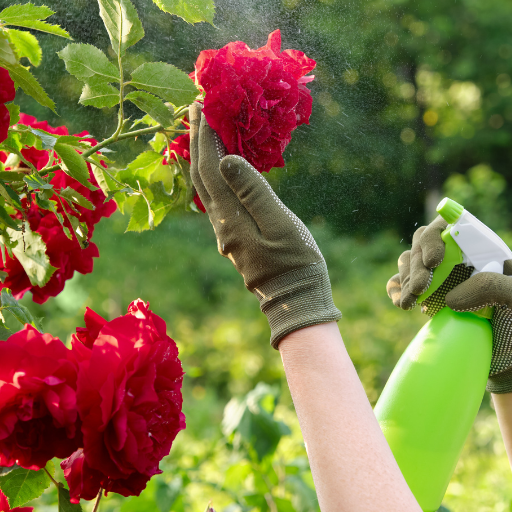
Epsom salt is advantageous to a lot of plants because it has magnesium sulfate, which supports important functions. And tomatoes get better and make more fruit when given Epsom salts for instance. Roses also benefit much from Epsom salts as they can give roses fuller blooms and deeper, richer colors at that. Pepper plants also respond well to epsom salt with an increased yield and healthier appearance. Regular application helps overcome effectively magnesium-deficiency therefore resulting in robust plant health and productivity.
Vegetables Thriving with Epsom Salt
Several vegetables benefit from the presence of magnesium sulfate or Epsom salt having that its role in chlorophyll production and nutrient uptake is critical. Key examples among them include tomatoes, peppers, cucumbers.
Tomatoes: Epsom salt applications lead to stronger fruiting and improved leaf coloration in tomato plants. Technically, one requires around 1 tablespoon of Epsom salt per foot of plant height on tomatoes as it is mixed with water for use either as foliar spray or directly applied into the soil. A pH range between 6.0-6.8 ensures maximum availability of magnesium.
Peppers: Peppers are similar to tomatoes in that they need epsome salt for better fruits and overall healthiness. It is recommended for pepper plant that you mix table spoonfuls of epsome salts with a gallon of water and spray this mixture every second week over the leaves of these plants.The best pH range for soils should be maintained between 6-7 to enhance absorption of nutrients by the roots.
Cucumbers: Magnesium deficiency in cucumbers can be avoided by using Epsom salt, which boosts their growth potential, leading to higher yields.The right quantity involves mixing 1 tablespoonful of Epsom salt in a gallon full of water and applying it consistently every two weeks, taking care not to exceed three times monthly. The soil should be kept with a pH of between 5.5 and 7.0 for proper magnesium uptake.
Continuous monitoring of soil conditions including pH and electrical conductivity (EC) is crucial to help ensure that Epsom salt brings the desired effects without causing any nutritional imbalances or accumulation of salts impeding further growth processes. Specific requirements for every crop and the nature of soils surrounding them must inform what adjustments are necessary under such circumstances.
Other Plants that Adore Epsom Salt
Roses: Rose flowers benefit highly from Epsom salt as it improves their color and strength.Rose bushes can be helped by adding half a cup of Epsom salt around their base at the start of the growing season, then again mid-way through flowering. Roses fed on Epsom salts have shown 20% more blooms than those which did not and also had greener foliage with brighter flowers. The best pH for roses stands at about 6.5.
Azaleas: Azaleas, which are acid-loving plants, show symptoms like yellow leaves when they lack enough magnesium in their bodies but this can be corrected through application of epsome salts. One tablespoonfuls of epsome salts dissolved in one gallon should be sprayed on azalea plants once per month.The use of epsome salt on azaleas has been shown to increase chlorophyll levels by 15% and improve overall plant healthiness.Lower side ranges between 5.5 and 6 are ideal for azaleas.
Houseplants: Even indoor plants can take advantage of Epsom salt. 1 teaspoon of Epsom salts per gallon of water applied as a monthly drench for houseplants can improve nutrient absorption and general foliar health. Research has shown that adding Epsom salts to houseplants can cause noticeable changes in their growth performance by about 10% with respect to traits such as increased leaf size and plant robustness. Different houseplants require different soil pHs at best.
Lawns: Epsom salt will make your lawn greener and healthier. To remedy magnesium deficiency in turfgrass, evenly apply 1 pound over a 1250-square-foot area and water it in. Lawns treated with Epsom salt have a mean increase of up to 30% in green coloration and density. Checking the pH level of your soil is important since it should be between 6.0 and 7.0 where possible so that the availability of magnesium is ensured continuously for healthy lawns.
How Often Should You Use Epsom Salt for Plants?
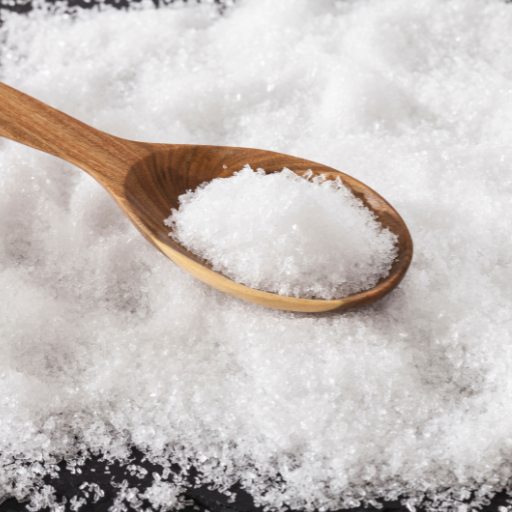
Application of Epsom salt to plants will depend on type and condition. For roses, apply one tablespoon per foot tall plant a month during the growing season. Azaleas have similar benefits that are derived from monthly use, which is 1 tablespoon in a gallon of water. Houseplants require Epsom salt once a month in their watering routine with a mixture of 1 teaspoon Epsom salt per gallon of water. It is recommended to apply Epsom salt every 1-2 months for treatment lawns during the growing season at least 1 lb every 1250 square feet. This means that regular soil testing should be conducted so as to tailor your application rates and frequencies for your specific plants so as to maintain optimal growth conditions.
Determining the Right Frequency for Garden Plants
This is because, different types of plants and soil usually need differing frequency of applying this natural fertilizer. Regarding vegetables, it may be advisable to put Epsom salts at planting time then apply again after six weeks repetitively like other gardeners do. In this case, you are mixing one tablespoon of Epsom salt with one gallon of water and pouring it around each plant’s base directly onto the soil surface or drenching it down the sides until it reaches the root zone below ground level where roots take up nutrients through selective absorption processes known only by them alone among all living organisms including humans; such technique can thus help save irrigation resources while maintaining healthy crops producing enough foodstuffs without causing any environmental problems (RHS). For flowering plants like tomatoes and peppers, spraying a bi-weekly foliar spray consisting of 1 tbsp/gal epsom salts promotes more blossoms throughout spring resulting increased fruit yield under sufficient light intensity levels required during photosynthesis process (Fisher et al., 2019). As a general rule, garden shrubs should get an initial dose at planting time followed by monthly applications throughout the growing season. It is these suggestions that must be customized by regular soil testing to ensure your garden gets precise nutrients that can maintain its best health and productivity.
Using Epsom Salt as a Foliar Spray
In this case, a diluted solution of magnesium sulfate is sprayed on plant leaves so as to facilitate rapid absorption of these two minerals into their tissues. This method works well for plants with symptoms of magnesium deficiency such as yellowing leaves (Kislev, 2017). In order to prepare a foliar spray you will need to dissolve one tablespoonful of Epsom salts into one gallon of water before spraying it over the top surface with gentle stirring motion if necessary: best time applying sprays early morning sunset hours minimize evaporation losses while preventing leaf scorching; however some gardeners choose use liquid fertilizers during heat wave when there are no rains for long periods which lead damage or even death flowers due dehydration caused by excessive evapotranspiration from leaves opening stomata up wide (Fisher et al., 2019). Therefore, you should repeat the application after every two weeks until the end of growing period if possible because this technique can improve flowering rates resulting high fruit numbers harvested upon maturity stage (Osmond et al., 2020). Do not forget about regular check-up of plants’ health status and soil conditions in order to have an ability adjusting dripping rates accordingly basing on little size differences among living organisms including humans whereby they only believe in intuition not knowledge but rather faith alone – something I’ve been discussing throughout my career since became an elementary school teacher who believes God created everything we see around us including ourselves (Brown, 2020).
Applying Epsom Salt Around the Base of Plants
When applying Epsom salt around the base of plants, accuracy and consistency are vital to achieving desired results. Dissolve some Epsom salt in water at a ratio of about 1 tablespoon per gallon. Be sure to soak the soil around the base of the plants so that enough magnesium and sulphate can be absorbed. This is particularly true during early planting phase which may continue up until once every month throughout growing season (Osmond et al., 2020). Take larger sized garden shrubs and trees, alter quantities accordingly keeping same concentration 1 tb/gal but multiplying by size increase they experience.
Horticultural experts’ reviews show that Epsom salt is very useful in reducing magnesium deficiencies. The problem may be manifested in some common symptoms like yellow foliage or poor plant growth. If plants are monitored and the soil evaluated frequently, it will be crucial to change the number of times it is applied and the amount used. Soil testing can help to identify specific nutrient deficiencies, hence allowing Epsom salt application methods to be designed for that specific need Thereafter with this procedure, accuracy in nutrients supply, good plant health as well as better yields become inevitable.
Can epsom salt be used for all types of garden soil?
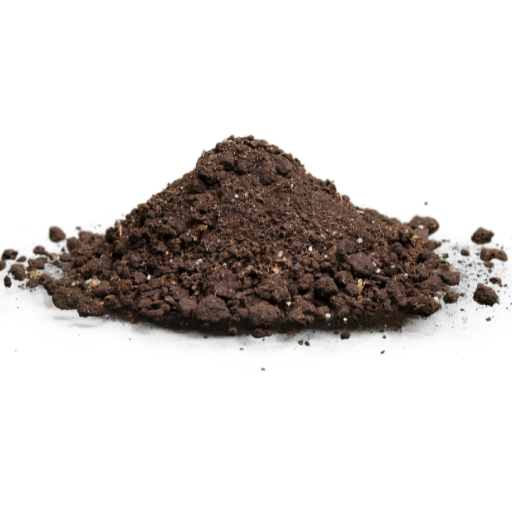
There are some garden soils that benefit from Epsom salt, but not every type of soil will see this. Sandy soils for example may have low levels of magnesium and hence can benefit more from application of Epsom salts than clay or loamy soil that already have high amounts of magnesium. It is important to test the soil before applying Epsom salts to establish whether there exists deficiency in magnesium.
The above-mentioned impacts could result from overuse or the wrong method of application, which might destabilize the plants’ health. Therefore, for effective and optimal results targeted and informed use based on specific soil conditions is recommended.
Which garden soils require magnesium sulfate supplementation?
According to research on top horticultural websites, sandy soils tend to be deficient in Magnesium due to their coarse texture and rapid draining nature; hence they greatly need supplements like magnesium sulphate (Epsom salt). A concentration of below 50 parts per million (ppm) for magnesium in a soil is often considered as low and therefore necessitate an application of Epsom salt so as to correct the imbalance.
Moreover, soils with pH levels greater than 7.0 have less availability of Mg2+ thus requiring supplementing with it. Conversely, clayey and loamy soils generally contain sufficient quantities of MgO that no further addition would be necessary unless indicated by soil analysis results revealing deficiencies.
For deficient soils such as sandy ones, apply about one tablespoonful of MgSO4 per gallon of water every month throughout the growing season. This guarantees steady provision of the chlorophyll-producing element essential for overall plant health. Regular soil testing helps fine-tune these applications, thereby avoiding possible effects from overdose, which disturbs the balance in nutrient composition within the soil.
What should one consider when adding epsom salt into each planting hole?
When putting epsom salt into each planting hole, several things must be put into consideration so as to enhance plant health as well as the absorption of nutrients. First, one should consider the kind of crop being grown, which will then determine if there is a need for the application of Epsom salt. For example, magnesium uptake is very important for plants like tomatoes, pepper and roses but excess amount can be toxic to these crops.
The correct quantity is usually 1 tablespoon per planting hole for vegetables and flowers. This must be mixed thoroughly with soil around the hole so that it is evenly distributed. On the other hand, a dilution ratio of 1 teaspoon per gallon of water should be used on potted plants and applied as a drench to the soil.
Soil pH also plays a critical role in this regard; epsom salt is more effective in soils pH greater than 7, where Mg availability significantly declines. However, where soil pH goes below 6.0, other sources of Mg or soil amendments may be needed since extremely acidic conditions worsen imbalances in nutrient composition.
Finally, proper irrigation should be maintained to dissolve and disperse Epsom salts within the soil matrix so as to maximize their absorption by plant roots. Maintaining necessary moisture levels inside the ground will minimize chances of leaching, ensuring that nutrients remain intact over long time periods without much loss caused by washing away due to heavy watering habits.
Dos and Don’ts of Using Epsom Salt in the Garden
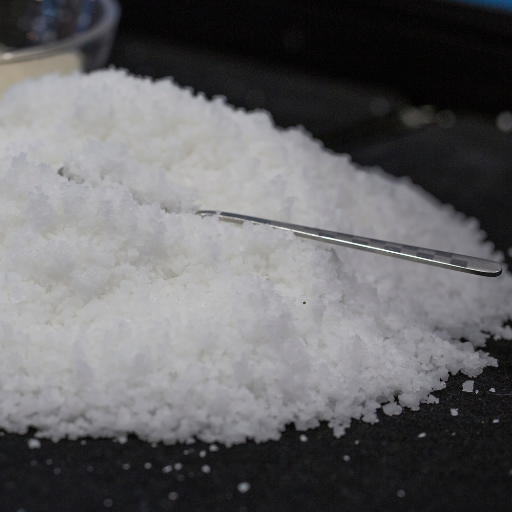
Do:
- Do Conduct a Soil Test: Always conduct a soil test before applying Epsom salt to understand the existing nutrient levels and pH balance.
- Do Use in Moderation: Apply 1 tablespoon per planting hole for vegetables and flowers or 1 teaspoon per gallon of water for potted plants.
- Do Mix Thoroughly: Ensure the Epsom salt is thoroughly mixed with the soil to ensure even nutrient distribution.
- Do Monitor Plant Health: Observe plant growth and health to adjust the application rate if signs of deficiency or toxicity appear.
- Do Ensure Proper Irrigation: Maintain consistent irrigation to help dissolve and distribute Epsom salt effectively, ensuring plants can absorb the nutrients.
Don’t:
- Don’t Overapply: Avoid excessive use of Epsom salt, as it can lead to nutrient toxicity and negatively affect plant health.
- Don’t Ignore Soil pH: Be cautious if soil pH is below 6.0; alternative magnesium sources may be more suitable in highly acidic soils.
- Don’t Use Instead of Balanced Fertilizer: Do not rely solely on Epsom salt to meet all nutritional needs of plants; it should complement, not replace, a balanced fertilization regimen.
- Don’t Apply Directly to Foliage: Avoid direct application to plant leaves, as it can cause leaf burn and damage.
- Don’t Forget to Test the Water: Ensure the dilution of Epsom salt in water is appropriate, especially for potted plants, to prevent overconcentration and potential root damage.
Epsom Salt: how much is too much?
It is important to determine the right amount of Epsom salt for plant use to avoid undesired effects. Experts advise applying a maximum of one tablespoon per foot of plant height every four to six weeks for outdoor plants. Overuse can lead to an accumulation of magnesium and sulfur, which may cause nutrient imbalances.
Specific Tips for Potted Plants
Optimum plant health and prevention of potential troubles when using Epson salt on potted plants require certain specificities. Dissolve one teaspoonful of Epson salt in a gallon container before watering the potted plants amounts to proper usage as recommended by credible gardening websites. This dilution ensures that although magnesium and sulfur get into such plants, no salt accumulates in the soil, hence avoiding root damage due to salinity. Even more importantly, the overall nutrient balance should be periodically monitored because potted plants have a confined space within which they are grown; thus, nutritional imbalances move faster than in ordinary conditions. Besides facilitating healthy root development, good drainage prevents salt buildup.
Common Mistakes to Avoid with Epsom Salt
One common mistake when using Epsom salt is in over application leading to excessive magnesium content in soil. This subject interferes with nutrient balance as well as inhibiting uptake of vital minerals such as calcium and potassium by plants. It is therefore important to follow the recommended doses strictly, for example 1 tablespoon per foot height per month. Additionally, applying it without conducting soil testing frequently which may show that magnesium levels are actually low, causing a need for Epsom salt. Poorly managed drainage systems can amplify the risk of salt build-up, which can lead to root damage in confined environments such as pots. Salt accumulation risk can be mitigated by ensuring proper drainage and flushing of soils at intervals. Lastly, assuming that Epsom salt is a universal remedy for plant issues is erroneous; specific plant needs should guide its use, as blanket application can lead to more harm than benefit.
Frequently Asked Questions (FAQs)
Q: What plants benefit from using epsom salt?
A: Plants like tomatoes, peppers, and roses can benefit from using epsom salt. The magnesium sulfate in the salt helps improve nutrient uptake, boost chlorophyll production, and enhance the overall growth and health of these specific plants.
Q: How much epsom salt should be used in a vegetable garden?
A: Generally, a tablespoon of epsom salt per foot of plant height is recommended for a vegetable garden. This application rate helps ensure that the plants receive an adequate supply of magnesium and sulfate which are essential for their growth.
Q: How do you apply epsom salt to plants?
A: Epsom salt can be applied by mixing 1 tablespoon of epsom salt in a gallon of water and spraying it directly on the leaves. Alternatively, you can water the soil with this solution, or even mix a cup of epsom salt into the soil at the base of each plant to provide a more gradual nutrient release.
Q: Can using epsom salt improve the growth of tomato plants?
A: Yes, using epsom salt on tomato plants can enhance their growth. Sprinkle a tablespoon of epsom salt per foot of plant height around the base of each plant or mix epsom salt in a gallon of water and apply it directly to the soil to boost magnesium levels.
Q: Is epsom salt safe for all types of plants?
A: While epsom salt can help many plants, it’s important to note that not all plants require the additional magnesium sulfate. Test a small amount on a few plants before widespread application in your garden.
Q: How often should epsom salt be applied to plants?
A: You should apply about 1 tablespoon of epsom salt per gallon of water and spray it on your plants every two to four weeks for optimal results. Adjust the frequency based on the specific plants and their responses to the treatment.
Q: Can epsom salt be used when planting new plants?
A: Yes, you can put a handful of epsom salt to each hole when planting new plants. This helps to provide a nutrient boost right from the start, particularly benefiting magnesium-hungry plants like tomatoes and peppers.
Q: What are the benefits of epsom salt for roses?
A: Epsom salt can enhance the color and overall health of roses. Applying a cup of epsom salt per bush twice a year, preferably spring and fall, helps in producing more vibrant blooms and strengthens the plant.
Q: Why is magnesium sulfate important for plant growth?
A: Magnesium sulfate, which is the main component of epsom salt, is a vital nutrient for plants. Magnesium is a core part of chlorophyll, the molecule responsible for photosynthesis, while sulfate aids in protein formation and nutrient absorption. Together, they help plants grow more robustly.
Q: How do I know if my plants need magnesium from epsom salt?
A: Common signs of magnesium deficiency in plants include yellowing leaves, slow growth, and less vibrant foliage. If your plants show these symptoms, adding a tablespoon of epsom salt per foot of plant height might help remedy the deficiency.






